Magazine
Design incorporates objects, people,
ideas based on the small pleasures of everyday life.
Meet your Beautiful design world with the DDP Design Fair.
-
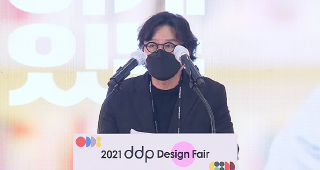
Establishing a New Value to Make Everyday Life Beautiful and Make Life Happier
Overall Review of 2021 DDP Design Fair by Gilhyung LeeOverall Review of 2021 DDP Design FairThe 2021 DDP Design Fair presented a “Wonderful Life” to citizens who have been hit hard by the COVID-19 pandemic, along with the efforts of makers and designers. This year’s fair showed the new value of design, which makes life happier when everyday life becomes beautiful through design. The circular space of the theme hall, the Collaboration Zone of makers and designers, was able to increase the spotlight on the exhibition. The garden shelter within the exhibition space seems to be brought directly from the nature. It means more than a rest zone for visitors and offers a space where visitors can regain energy and get away from the stress caused by the COVID-19 pandemic and rest their tired legs while looking around the exhibition. On the other hand, it would have been better if the space between the Launching Zone and the Trend Zone had been connected in a more seamless way. Seamless spatial connection remains a priority for the DDP Design Fair for the sustainable development with design companies and large companies in the future.Expectations for 2022 DDP Design FairThe DDP Design Fair should remain as a venue which can boost the industry’s value with future-oriented business and new content led by the design industry. In addition, the fair should encourage design’s participation in the society, share the trends of the time and include design management based on ESG (Environmental, Social and Corporate Governance). This means taking a step forward by addressing social issues with safe codes for responding to crises, developing eco-friendly materials with green design solutions, establishing a governance system for the development of the design industry, and building a global network. The fair is expected to broaden its support for business lounges and global distribution, expand the base of the design market and eventually strengthen the DDP's status as an organization that can lead Seoul citizens and global trends.
2021-11-16441 -
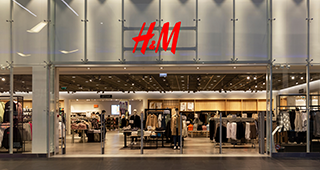
Reading the Hidden Power of Space Design from SPA Brand Stores
A more advanced strategy using consumer psychologyWritten by Jungho Park (Professor of Myongji University)Specialty store retailers of private label apparel (SPA) or fast fashion brands refer to clothing brands that directly manage the entire process from planning and design to production and manufacturing to distribution and sales. Uniqlo, Zara and H&M are well known examples of SPA brands. They have been popular around the world since they have the advantage of being able to mass produce new products within about 10 days according to the demand and trends of the market.However, in-store marketing strategies of these SPA brands are quite similar. Even though they sell inexpensive clothes, their stores feature a sophisticated atmosphere. They even operate huge flagship stores. Since it is difficult to make a lot of profit by selling cheap clothes, operating huge and luxurious stores can lead to greater financial loss. However, they operate on a hidden strategy using consumer psychology. SPA brands operate huge flagship stores to encourage consumers to stay longer and shop longer. If the store is small, shoppers are highly likely to take a look at clothes near the entrance and pass by the store. If the store is large, it is easy to attract customers into the store since it is hard for them to see clothes deep inside the store without stepping inside. Once shoppers step inside the store, they are more likely to choose and try on a variety of clothes from the rack. In most cases, people casually buy fast fashion clothes on the fly when they find something they like in the store. Therefore, encouraging consumers to look through clothes and stay longer would lead them to buy things on impulse.
2021-11-16376 -
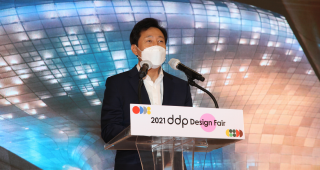
The DDP Design Fair serves as a stepping stone towards coexistence and great strides of progress and represents Seoul, up and running again
Seoul Mayor Sehoon OhThe DDP Design Fair of 2021 is the epitome of the great design sensibility of designers and makers. The results of collaborations unveiled through this year’s DDP Design Fair are innovative products that have never existed before and have been developed and produced by makers who were looking for design ideas and designers who were seeking manufacturing support. I believe the products hold great significance and value. The DDP Design Fair is a meaningful project that strengthens the design competitiveness of small businesses who are considered as the veins of local economies, provides job opportunities to young design graduates and creates a healthy and virtuous cycle in the design industry by offering a career ladder to climb. I hope this event serves as a stepping stone towards coexistence and great strides of progress to support the growth of small businesses and enhance the competitiveness of the design industry in Korea. The Seoul Metropolitan Government will offer full support and commitment to make this happen.Recently, the Seoul Metropolitan Government announced “Seoul Vision 2030”, the master plan of the city government's policy direction over the next decade for getting Seoul up and running again. Based on the vision of “Seoul, up and running again for fairness”, the city government is planning to make Seoul the city of coexistence, a future emotional city, a global leader and a safe city. In particular, our goal is to make Seoul an attractive future emotional city that everyone around the world wants to visit, live, and invest in, and the DDP will play a central role in these efforts.The DDP is a design landmark and one of the most attractive assets of Seoul that was built under the vision of “World Design Capital” about ten years ago. To strengthen its role as a platform for the design industry, the DDP will be developed into a Larchiveum (a combination of the words library, archives and museum) that specializes in design and supports technology development, the cultivation of talented personnel and the marketing of young startups and small business owners. Please show some love and support. Congratulations on the opening of the DDP Best Design Awards 2021. I would like to sincerely congratulate the winners of the DDP Design Fair’s Best Design Awards. I would also like to thank all participants for their creative ideas and wonderful works, as well as the experts and citizens who participated in the process for selecting the winners.
2021-11-11326 -

Technology-based Startup vs Design-based Startup
The importance of noticing the difference between design and technology in advanceWritten by Jungho Park (Professor of Myongji University)For technology-based startups, it takes a lot of time and money to launch a product. For example, it takes an average of 16 years to develop a new drug. An average of $800 million is invested during the development period. It also takes an average of $200-300 million to develop an online game. The game development period ranges from 4 years to as long as 10 years.Of course, the examples mentioned above represent the industry which requires a lot of time and cost for development. What is clear is that it takes much higher cost and longer time for R&D, especially for technology-based startups when compared to design-based startups. Anyone who is thinking about starting a business based on technology needs to be aware of this.The completion of development does not mean everything is all set. For technology-based startups, what is most important is performing a trial run under actual conditions as well as filing a patent application. Make sure that the technologies and products you have developedwork well in real world conditions. A sneaker startup, which was once popular, made a crucial mistake of producing sneakers made of fabric that bleeds color in the wash. An MP3 player manufacturer, which was widely acclaimed for its high quality, was eventually shunned by consumers because its MP3 player did not work in subfreezing weather. It is important to do a trial run for a considerable period of time as long as the development period since missing small details can lead to irreversible consequences.It is easy to think that it is much easier to create a new product by combining technologies that already exist in the market than investing a lot of time and money to develop a new technology but this method also requires a considerable amount of time and money.Design-based startups are different. Unlike technology R&D, design development does not require a variety of research equipment and facilities. The duration of design development varies greatly among designs. Designs based on of a lot of thought and effort lead to a successful outcome, but sometimes designs created by an intuitive spark resonate with consumers.Design-based startups should beware of counterfeits which are commonly referred to as “knock-offs”. It is more difficult to properly protect designs under intellectual property rights than technologies. Unless they are exactly the same, it is not easy to claim that someone has infringed on the intellectual property rights even when the design is somewhat similar to your work.Many startup founders endure through extremely difficult situations to create a technology or design that provides extraordinary added value. Understanding the main points that are mentioned above and noticing the difference between design and technology in advance will be perhaps the easiest way to overcome difficulties.
2021-10-27333 -
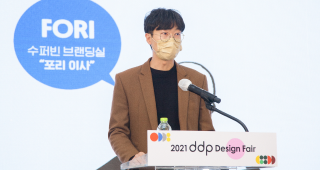
Turning waste into money. Making recycling fun.
SuperBin - Waste cultureFori (Head of SuperBin’s Branding Team) I’m responsible for SuperBin’s overall branding strategy and design projects. SuperBin is a company that practices the value of “turning waste into money and making recycling fun”. Waste is a very serious problem across the globe. In the past, garbage was out of sight, out of mind for many individuals. They used to think the problem was gone once they take out and dispose of their garbage and their space becomes clean and pleasant. However, the problem of waste has become an increasingly serious issue and is posing a threat to human life again. It is not only causing problems to human beings but also starting to destroy the entire ecosystem. In particular, many Southeast Asian countries have been accepting container loads of waste from advanced countries and burying them somewhere in return for subsidies. These days, people sort and dispose of recyclable plastic waste. They even feel a sense of accomplishment when they separate their trash into different bins for recycling. However, have you ever thought about where all the waste goes and what happens to it?SuperBin was established to find ways to create a positive economic structure. It took about five years to start the business, and it has evolved into what you see now. SuperBin diagnosed that the existing waste sorting system is not functioning properly, identified that the waste sorted by the system introduced by the Ministry of Environment cannot be recycled and concluded that companies will not reuse recyclable materials if they are not sorted properly at the first place. That’s why we tried to focus on establishing an effective waste sorting process to start off on the right foot. With AI technology, we tried to build a process to obtain clean resources, which used to be sorted manually, deliver them through an accurate logistics system without letting different types of materials being mixed with each other, process them into useful materials and supply them to companies to manufacture products. We are designing a system to create a circular economy and reduce the amount of waste sent to landfill, incinerated or ended up in oceans or mountains.First of all, we hope the government also joins the movement to install reverse vending machines. Second, we hope the citizens are eager to participate. If the citizens take an active part in this movement, local governments and companies will have no choice but to follow. For consumers, the best way to impact large companies is not purchasing products that are designed to be eco-friendly. To make profit, companies cannot help but consider the environmental impacts. Therefore, we think that environmental problems can be solved only when the government, companies and consumers bring change together.
2021-10-26400 -
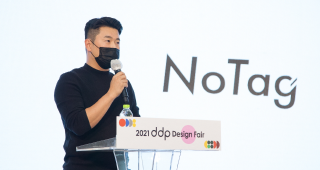
“Design , How to Sell?”
NoTag Korea CEO Woong ChoiWhat comes to your mind when you are asked the question “Where and how are you going to sell your design products?” One of the things many designers consider the most is product distribution. However, as a design major, most of them mainly focus on how to design things and do not think about how to distribute their products to customers. That’s why in many cases even well-designed products remain stacked in warehouses. In this regard, I would like to talk about the distribution of design, especially overseas distribution. In Korea, after designers, makers, or small and medium-sized enterprises create design products, they sign a contract with a trading company or a trading agency to sell their products. After signing the contract, a contract is made with an exclusive distributor for each country or region. The exclusive distributor supplies and exports the products to other wholesalers in the area, and the wholesalers supplies the products to retailers. This is how most consumer goods are exported. However, design products do not follow this kind of distribution structure. Therefore, when the advisors of KITA or KOTRA or general trading companies communicate with designers, in most cases, no progress is being made in the negotiations, and the project gets put on hold. In fact, the most common way was to showcase the company's products to large trade fairs such as Maison & Objet, meet with buyers across the globe, sign contracts with them to export its products. However, things have changed a lot over the recent two to three years since the outbreak of the COVID-19 pandemic. Many international fairs have disappeared from the calendar. Meanwhile, Maison & Objet has been hosting its virtual fair successfully for more than five years, way before the COVID-19 pandemic began. Thanks to its efficient operation, designers could sell their products through the online store, and buyers could place orders and view detailed information about the products. This allows designers to participate in the fair and meet buyers with a low fee. Over the last two years since the outbreak of the COVID-19 pandemic, there have been Korean companies selling design products and seeing high sales through various cross-border e-commerce platforms where designers themselves become export and distribution experts and make inroads into the global market. I recommend designers to start selling their products through these platforms to expand their global market share by twice to ten times. There are no intermediaries since designers themselves can sell and manage products on the platform. We are in the era where designers can find and leverage distribution channels as much as they put effort into design or product quality. We can say that this kind of system is more advantageous to young makers or designers who can quickly learn new technologies than small and medium-sized enterprises or large corporations.
2021-10-26375 -
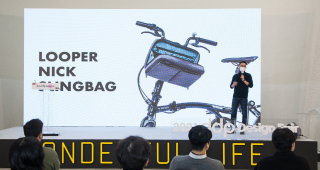
Besides products, what else do successful crowdfunding projects sell?
Looper CEO Yongwoo LeeDesigners have many thoughts about how to market their own products. I would like to talk about one of the methods, crowdfunding. I started a brand called Looper, and Looper is a brand for people who are trying to balance their work and personal lives through traveling. Looper is growing into a smart fashion brand as it combines design and technology to create fashion products and develops an application useful for traveling. Looper has always met its customers first through crowdfunding to launch a new product since its establishment. We have once raised about 300 million won through a global crowdfunding campaign, raising funds not only in Korea but also in the United States and Japan. Crowdfunding is a portmanteau of the words “crowd” and “funding”. Before unveiling our company’s product or the product I have developed, we try to deliver on our promises to backers by taking pre-orders to raise funds and shipping products to consumers when we reach the fundraising goal and also reward them by offering discounts and various reward benefits. There is a new market for crowdfunding. Target customers may change from when you initially planned and developed the product. Since crowdfunding platforms showcase new products that never existed before, people who are interested in new products — and especially those who like new technologies or products that are actually useful in real life — are lining up to become backers of crowdfunding projects. That’s why early adopters mainly participate in crowdfunding projects. They are also professionals with deep knowledge. Therefore, they are the main target customers, mostly in their twenties, thirties and forties. According to the statistics, crowdfunding platforms have more male subscribers than female subscribers. Looper has a lot of products for travelers. We thought about who will be most attracted to our product when it gets unveiled and concluded that they are expected to be people who like crowdfunding projects. We have been launching many products through Wadiz, the largest crowdfunding platform in Korea and have successfully crowdfunded over ten projects this way. Then, what is a good example of a product detail page?It is important to make a strong first impression. It would be great if you can come up with some catchy copy to grab attention. Even if the product detail page gets lengthy, you must include the actual product dimensions. To assure the quality, please make sure to list strengths of the product such as ingredients or patents without leaving out important information. It would be great if you can start marketing the crowdfunding campaign from two weeks to one month before its launch. In that way, customers will be informed about the crowdfunding campaign in advance, including when and where the product will be launched. I think it is very important to attract backers to your social media accounts or company website while running the crowdfunding campaign. If the product detail page is ready, shorten the URL using Bitly. The most important thing is to create an official website for your business. I recommend you to create videos with novice YouTube content creators to save more cost. Start the crowdfunding project after you have thoroughly prepared for it. I hope you get fully prepared for the marketing the crowdfunding campaign and achieve a great success.
2021-10-26395 -

Korean-style Designs Truly Come from Excitement and Immersion
Mysterious world of beauty found in Hangeul and MinhwaWritten by Seyoung Lee (Graphic Designer, CEO of Gallery Joseon Minhwa)It takes a lot of effort and energy to create Korean-style designsIt is too one-dimensional to find and apply Korean-style iconography for Korean-style designs. This is something we do for design assignments. The way we live is Korean style, and the way we drink water is also Korean style. The way we live represents Korean style, but in general, Korean style refers to something traditional. However, tradition is embodied in images, icons, colors, lines and other things. It is important to pay careful attention to these small details. Korean-style designs can be expressed differently depending on each individual's perspective and taste. Instead of merely adopting a Korean-style image, being fully immersed in the work and taking pleasure in the work will be much more meaningful. Designers say they go to art galleries, museums, and libraries to get inspiration but I have a different point of view. Something Korean has nothing to do with Korean-style iconography. To draw something and achieve a result, you need to stay around the object and take pleasure in that. In the midst of that joy and excitement, you need to fully immerse yourself in something. Immersion does not merely mean sitting a long time in the same position and feeling focused. It requires a tremendous amount of effort. The results vary greatly. Creativity is about making something different from others. It takes a lot of effort and energy.Mysterious world of beauty found in Hangeul and MinhwaI think the most creative things in Korea are Hangeul, the Korean alphabet, and Minhwa, Korean folk art. It is because they are letters and drawings created with our own originality. Scholars of Jiphyeonjeon (Academy of Worthies, a royal research institute established by the Great King Sejong) initially opposed the introduction of Hangeul, and each letter was confined within a square block for over 500 years until recently. Even though King Sejong did not design each letter to be fit within a square block, Hangeul has been restrained for a long time. Minhwa was also looked down upon. Only literary paintings and royal court paintings were regarded as great art while Minhwa was classified as genre painting and was never treated as a painting. A man named Muneyoshi Yanagi from Japan introduced Minhwa by saying, “When you go to Joseon, there is a mysterious world of beauty.” This encouraged many Japanese people to come to Korea and buy folk paintings. The world of beauty that could not be seen in Japanese culture existed in Joseon. In fact, Korean-style beauty is not something you see in a museum. It is something already part of our daily lives. It is like a DNA that has continued passing through generations. Our passion will help us discover this beauty. We might discover art full of vibrant energy just by paying attention to the things we used to ignore.
2021-09-24611







